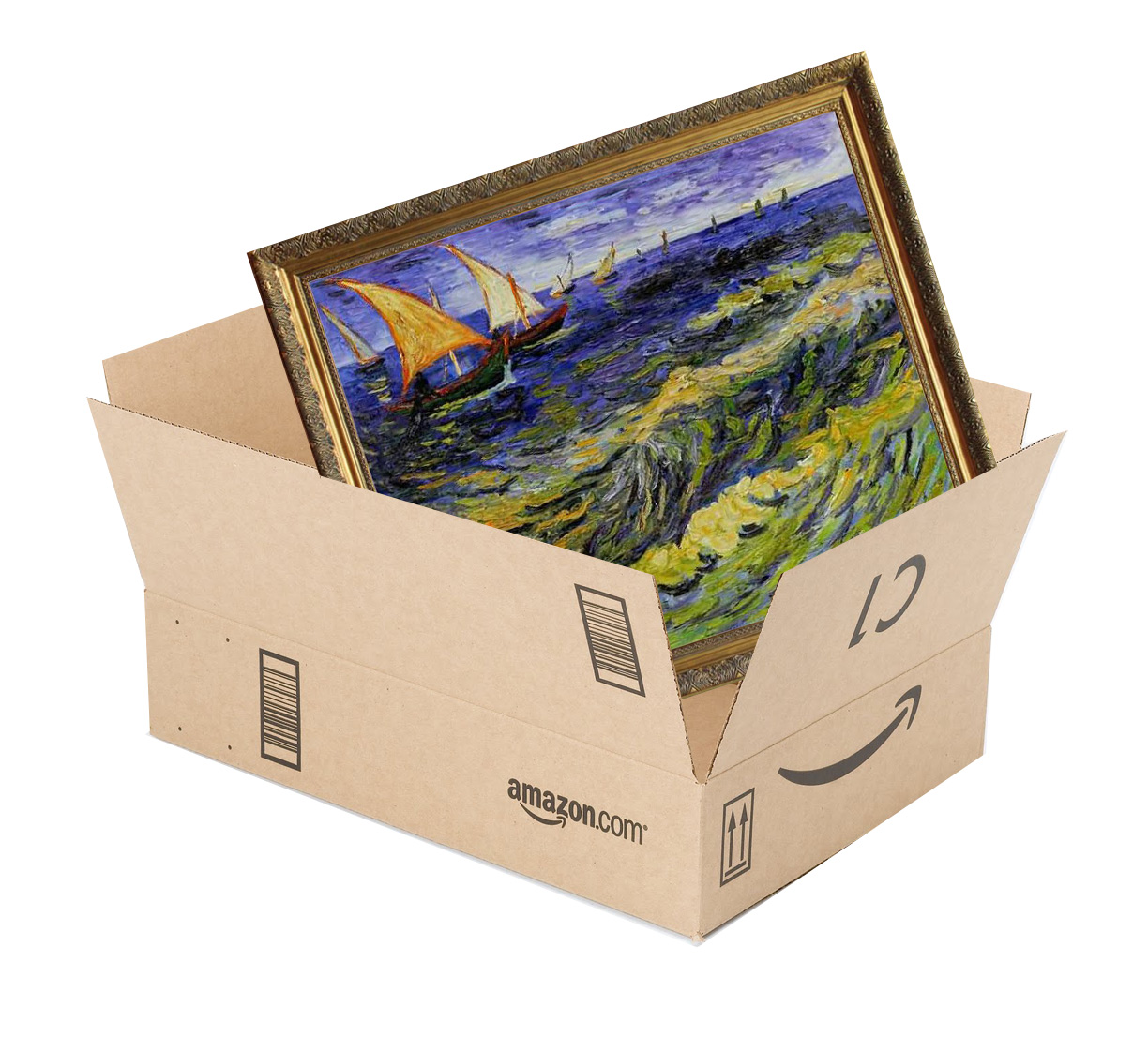 Way back in the old days (oh, say 1987) we had it pretty bad. Though it was our parents, in their youth, who had to walk to school barefoot, in the snow and uphill (both ways!), my generation was the last to shoulder the nearly unbearable burden of, not only leaving the house to shop, but going to a different store for each product.
Way back in the old days (oh, say 1987) we had it pretty bad. Though it was our parents, in their youth, who had to walk to school barefoot, in the snow and uphill (both ways!), my generation was the last to shoulder the nearly unbearable burden of, not only leaving the house to shop, but going to a different store for each product.
It wasn’t until 1994 that Amazon set out to obviate the need for something so bourgeois as travel to be included in the shopping process. Back then it was just books and Free Super Saver Shipping. But that would change in the years to come.
This month Amazon announced Amazon Art, finally offering you a way to, without even getting up off the couch, purchase that Van Gogh you always imagined hanging over the fireplace.
At this point you’re thinking: “Wow, I knew Amazon had a lot of cash, but I didn’t think they would spend the time and money to stock their robot-staffed warehouses with Dali, Matisse and Rembrandt”. And you’d be right.
This is the second time in recent history Amazon has done this particular trick—the art of offering an amazing array of desirable objects while sidestepping the cost-of-goods-sold-albatrosse that hangs around a retailer’s neck when doing things the old way.
Just to be clear, the old way is the process of sourcing a product line; negotiating with vendors; importing product to your location; storing it in your warehouse; controlling and account for physical inventory; cataloging, listing and advertising the product line; and then shipping the product to the end customer.
And just to be a little clearer: Amazon isn’t doing (or paying for) nearly half of that.
The new way of doing things.
Like the deft sleight of hand Amazon employed when taking over the wine business, this new foray into the wide world of fine art has more to do with connecting dealers and merchants with the staggeringly large constituency Jeff Bezos and Co. have spent so much time building.
Amazon is leveraging their existing infrastructure to an amazing degree. Aside from making contact with art dealers and arranging for timely inventory control (not to mention a healthy revenue sharing deal), their only other tasks were to load listings on the website and continue on with the same mode of commerce they’ve been dominating for the better part of two decades.
Go now and do likewise, gentlemen.
So, what’s the lesson here? To quote TS Elliot, “Good poets borrow, great artists steal.” Your mission, should you choose to accept it, is to take a long hard look at whatever retail operation you may currently be attached to, and figure out if a similar opportunity exists.
In other words, can you identify a product line for which you can act as intermediate? Can you offer customers a great depth and breadth of sought-after, hard to find products without saddling your organization with the cost of buying, storing and shipping?
Remember: always work smarter, not harder. Complete vertical integration is a rich man’s game. And even the rich men don’t do it nearly as much as they used to. There are always ways to innovate, connect and extend. Finding ways to do that while spending less is where the rubber meets the road.